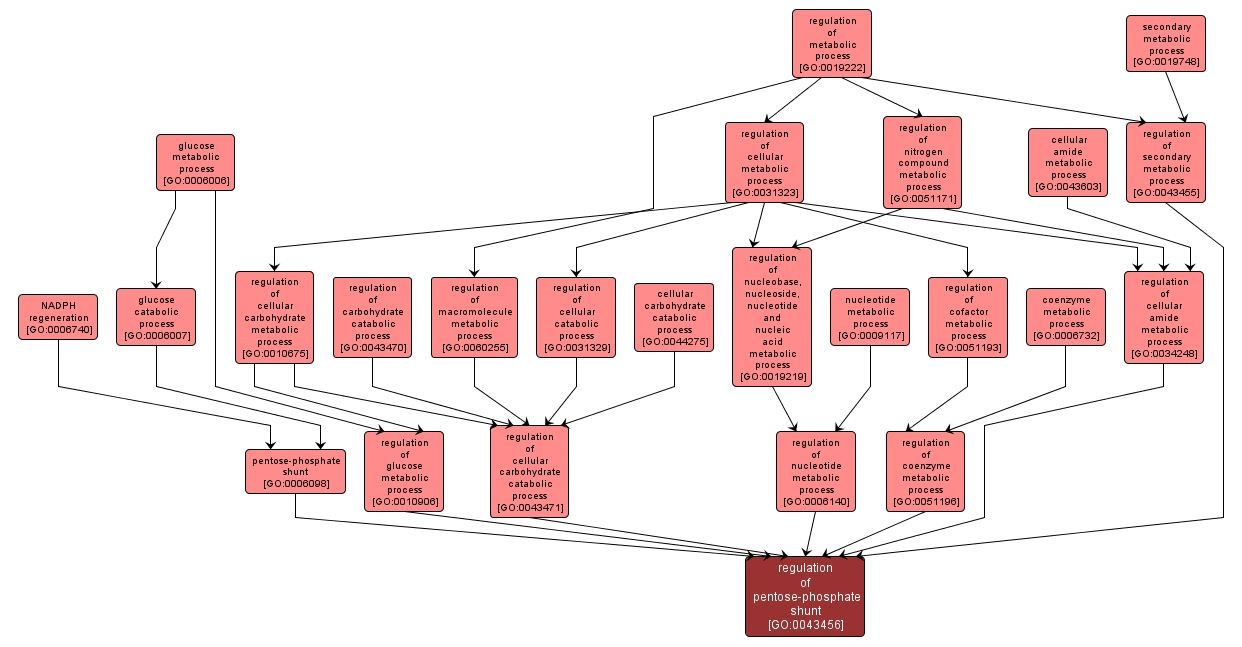GO TERM SUMMARY
|
| Name: |
regulation of pentose-phosphate shunt |
| Acc: |
GO:0043456 |
| Aspect: |
Biological Process |
| Desc: |
Any process that modulates the frequency, rate or extent of the pentose-phosphate shunt, the process by which glucose is oxidized, coupled to NADPH synthesis. |
Synonyms:
- regulation of pentose phosphate shunt
- regulation of pentose phosphate pathway
- regulation of pentose-phosphate pathway
|
|

|
INTERACTIVE GO GRAPH
|














